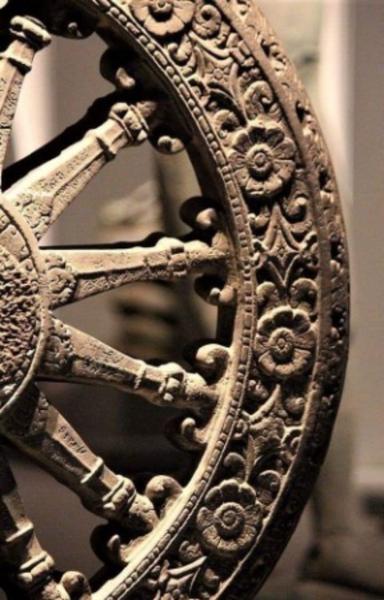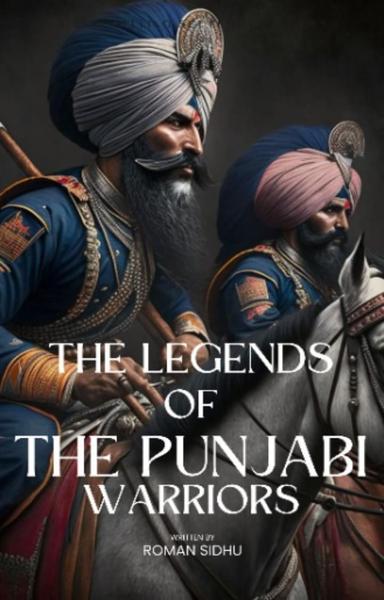The exploration of non-monarchical states in ancient India unveils a fascinating tapestry of diverse political entities, with a particular focus on the Lichchhavi clan. This essay delves into the democratic features of the Lichchhavis and other clans, drawing insights from Buddhist texts, Greek accounts, and the Arthashastra. Additionally, it examines the survival and revival of political corporations after the downfall of the Maurya Empire, shedding light on the complex interplay between imperialistic ideals and the enduring spirit of these ancient Indian states.
Buddhist literature provides a window into the democratic governance of the Lichchhavi clan, offering a detailed examination of their political structure. The Mahaparinibbana Sutta outlines conditions for the welfare of the Vajjians, a clan closely associated with the Lichchhavis. It emphasizes the importance of frequent public assemblies, reflecting a commitment to participatory decision-making.
The constitution of the Lichchhavi clan reveals a sophisticated system where a large assembly, comprising heads of various administrative units, played a pivotal role. This assembly resembled a federation of communities, with each community acting as a state in miniature. The democratic ethos was further highlighted by the active participation of assembly members in argument and disputation, underlining the importance of diverse perspectives in governance.
The term "gana" emerges as a key concept, signifying both political corporations and administrative units. The Lichchhavi assembly comprised leaders of these units, showcasing a decentralized yet federated governance structure. This intricate system provided each community with a complete administrative framework, emphasizing the autonomy of smaller units within the larger political entity.
The democratic principles observed in the Lichchhavi clan find echoes in the governance of the Sakya clan, particularly in Kapilavastu. While democratic features are evident, debates arise regarding potential oligarchic elements within the Sakya governance. Scholars like Professor Rhys Davids propose a hereditary kingship, while others, like Professor Bhandarkar, argue for a non-monarchical constitution.
References to a title like "raja" and the election of office-holders suggest a form of aristocracy within the Sakya clan. The absence of explicit royal authority in various narratives supports the theory that the Sakya constitution resembled that of the Lichchhavis. Multiple rulers or heads of administrative units governed collectively, portraying an oligarchic structure with shared responsibilities.
Greek writers, including Megasthenes and Arrian, contribute significantly to our understanding of non-monarchical states in ancient India. Their accounts highlight diverse political structures, including republics, oligarchies, and independent city-states. The Sabarcae and Nysa are cited as examples of democratic and oligarchic forms of government, aligning with the descriptions found in Buddhist texts.
The influence of Greek observations extends to reinforcing the prevalence of non-monarchical governance in the Indian subcontinent during the 4th century B.C. The synchronicity between Greek accounts and Buddhist narratives provides a more comprehensive view of the political landscape, emphasizing the coexistence of various political systems.
Kautilya's Arthashastra introduces the concept of corporations, shedding light on diverse professions and specific clans identifying with the title of "raja." This imperialistic text envisions a centralized rule where corporations are subordinated to a singular monarch. Kautilya's strategies to dismantle political corporations reflect an ideological shift towards imperial governance.
However, the survival and revival of political corporations after the Mauryan downfall challenge Kautilya's aspirations. The Yaudheyas, Mālavas, and others exhibit resilience against imperial forces, maintaining their distinct identities and influencing the political landscape. This resilience, rooted in ancient Indian political thought, contrasts with Kautilya's imperialistic doctrines.
The examination of non-monarchical states in ancient India reveals a rich tapestry of political entities, with the Lichchhavi and Sakya clans as notable examples. The democratic governance of the Lichchhavis, as depicted in Buddhist texts, showcases a sophisticated system where decentralized units federate under a larger political entity. The oligarchic features in the Sakya clan, coupled with Greek accounts, provide a nuanced understanding of the diverse political landscape.
The interplay between imperialistic ideals, as articulated by Kautilya, and the enduring spirit of political corporations contributes to the complexity of ancient Indian political thought. The survival and revival of non-monarchical states post-Mauryan Empire challenge the imperialistic paradigm, highlighting the resilience and adaptability of ancient Indian political entities. The synthesis of Buddhist texts, Greek sources, and the Arthashastra enriches our understanding of the coexistence and competition between various political systems, painting a vivid picture of ancient India's intricate political tapestry.
CORPORATE ACTIVITIES IN POLITICAL LIFE (11)
3 December 2023
3 Viewed

R C Majumdar
0 Followers
A historian at heart who has worked as a professor of Indian history at University of Calcutta, as a Sherriff of Kolkata and as the Vice-Chancellor at University of Dhaka. Education: BA (honours) from Presidency College, Calcutta; MA from Calcutta University. Parents: Haladhar Majumdar and Vidhumukhi. His contribution in Indian History: Suvarnadvipa(1938), Kambuja Desa (1944), Histories of champa (1927) D
Give response
5
Articles
CORPORATE LIFE IN ANCIENT INDIA
0.0
The book shows the importance of the spirit of cooperation in contributing to the highly developed stage of civilization. It emphasizes the significance of corporate activity in various aspects of life, including social, religious, political, and economic spheres. The book asserts that the modern age owes much of its progress to the cooperation and corporate endeavors seen in popular government and economic organizations worldwide. It then turns attention to ancient India, stating that while the country is presently backward in corporate culture, historical evidence suggests a different scenario in the past. The spirit of cooperation was prevalent in ancient India, evident in social structures like 'jati' (caste) and the Buddhist monk community, as well as political entities like 'Gana' (political corporation) and 'S'reni' (guild). The study aims to shed light on ancient India's corporate activities in public life, offering a historical account of various institutions. It also aims to broaden perspectives on the achievements of people in ancient India, suggesting that religion did not monopolize public attention. The book acknowledges that the subject has not been extensively covered by other writers. It briefly outlines the content of each chapter, highlighting the author's original contributions to the understanding of ancient India's corporate life. It draws from Brahmanical and Buddhist texts, providing a rough chronology for these sources. However, the focus is on the corporate aspects of these texts rather than debating their exact historical dating. Therefore the book asserts that it has a singular focus on the light these ancient texts shed on corporate life in ancient India, and any omissions are intentional if they don't contribute to this perspective.
Read Book
- Cookery
- Biographical Memories
- Children's Literature
- Comedy-satire
- Comics-Memes
- Education
- Feminism
- History
- Horror-paranormal
- Law & Order
- Love-Romance
- Self Help
- Sports-Sportspersons
- Suspense-Thriller
- Science-Technology
- Travelogue
- Other
- Diary
- Criticism
- Science-Fiction
- Social
- Erotic
- Familial
- Religion-Spiritual
- Craft-Hobby
- Crime-Detective
- Film Reviews
- Contemporary Stories
- Action
- Astrology
- Animals
- Literature & Fiction
- Trade-Money
- Translation
- Motivational
- Health-Fitness
- Latest Books
- Top Trending Books
- Listed Books
- Printed Edition Books
- Audio Books
- Reviewed Books
- Novel
- Story/ Story collection
- Poem/Poetry collection
- Magazine
- General Books
- Book Competition
- All Books...
Read Articles
- International Mother's Day
- World laughter day
- World Press freedom Day
- Covishield vaccine
- Paris olympic 2024
- Delhi liquor Scam
- Hanuman Jayanti 2024
- LokSabha election 2024
- Ram Navmi
- Eid-Al-Fitr
- Hindu New Year
- PMLA ACT
- Voter Verifiable Paper Audit Trail
- Mukhtar Ansari
- Martyrs' Day
- Citizenship Amendment Act
- Oscar Awards
- International Women's Day
- Sandeshkhali incident
- Farmer's Movement
- GLOBAL WARMING
- Daily_Competetion
- Childhood friends
- First book I ever read
- Sparking Innovation
- Feminism
- Rainy day
- Global climate change
- Momentary Love
- National education day
- Superstition or Faith (Bageshwar Dham)
- modern
- Ideological
- Discovery
- Vishwakarma yojna
- Karnataka Elections
- constitutional
- motivational
- Magical world
- webseries
- Society
- Chandrayaan3 landing
- Motivational
- Women's history month : march
- Nationalpoet Maithilisharan gupt
- Travel
- Mystery
- Climate change
- Deteriorating relations
- All Articles...


![Money fine Loan 𝐂𝐮𝐬𝐭𝐨𝐦𝐞𝐫 𝐂𝐚𝐫𝐞 helpline 𝐍𝐮𝐦𝐛𝐞𝐫☄️(+91)9503280053]]✓9503280053@? TOLL free number 9503280053 ?? - shabd.in](/_next/image?url=https%3A%2F%2Fshabd.s3.us-east-2.amazonaws.com%2Fbooks%2FMoney-fine-Loan--------------helpline---------91-9503280053--9503280053--TOLL-free-number-9503280053--_KartikRana_10349709_720-1125_1715358334865.jpg&w=384&q=75)
![Money fine Loan 𝐂𝐮𝐬𝐭𝐨𝐦𝐞𝐫 𝐂𝐚𝐫𝐞 helpline 𝐍𝐮𝐦𝐛𝐞𝐫☄️(+91)9503280053]]✓9503280053@? TOLL free number 9503280053 ?? - shabd.in](/_next/image?url=https%3A%2F%2Fshabd.s3.us-east-2.amazonaws.com%2Fbooks%2FMoney-fine-Loan--------------helpline---------91-9503280053--9503280053--TOLL-free-number-9503280053--_KartikRana_10349705_720-1125_1715357464956.jpg&w=384&q=75)







